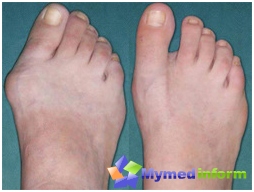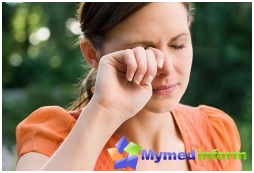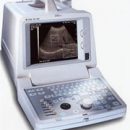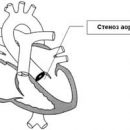Chronic fatigue syndrome caused by a high pace of life, great information and psychological pressure of the environment of us? Or yet the symptoms of the disease?
Anemia…
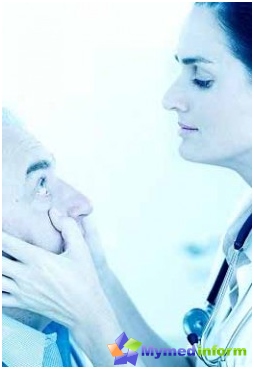
Under this word, doctors imply a blood hemoglobin reduction. Hemoglobin is a combination of globin and iron protein located in red blood cells - red blood cells. Their person has a lot: up to 500,000,000,000 in 1 liter of blood, so blood has a red color. It is the erythrocytes that deliver oxygen inhaled by a person with air to all organs, brains, muscles and cells. When hemoglobin and / or erythrocytes becomes little, the whole body begins to suffer, it develops «Oxygen starvation».
Manifestations of anemia
- First of all, the pallor of the skin, especially on the face, lips. Karglase people have a frequent symptom - glukeeper Scler.
- Increased fatigue, weakness, heartbeat and shortness of breath with a previously used physical exertion.
- Reliability and transverse exhaustion, thinning of nails.
- Dry skin, dull hair, hair loss.
- Changing language: pale, smooth language, cracks, burning.
- Painful cracks in the corners of the mouth, ulcers in the oral cavity.
- Unusual olfactory and taste addiction: for example, the need is chalk, sniff paint, etc.
- Bad islea tolerance, constant angility.
If you are experiencing similar symptoms, first of all you need to consult a doctor and Give blood test From finger. This is a simple and at the same time a very informative method of diagnosis, which will immediately show if there is a decrease in hemoglobin and / or erythrocytes and how much, and prompts the doctor a view of anemia. After the general blood test, the doctor will appoint you additional research methods to accurately determine the cause of anemia.
Why can not be engaged in self-medication?
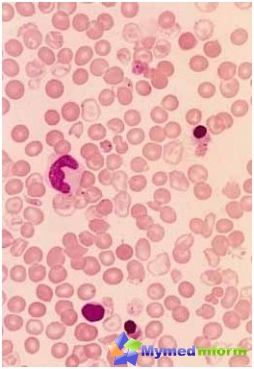
In life and medical practice meets most often (in 80% of cases).
A little physiology
Iron - one of the most important elements, it is necessary not only for the transfer of oxygen, but is an integral part of many enzymes literally in all tissues, so all the exchange suffers.
Iron enters us with food and absorbed in the stomach and duodenalist. Iron is found both in animal products (meat, liver, kidney), and vegetable origin (buckwheat, beans, apples, dried, prunes, etc.). But it matters not only how much iron is contained in this product, but in what form. The meat contains a complex of iron with protein (in the form of a hem), which is absorbed much better and faster than just iron located in plant products. The availability of iron from plant products - 2-3%, from meat is absorbed to 23%.
During the day, at a good operation of the gastrointestinal tract, an average of 1.5 milligrams of iron is absorbed, the maximum that can be learned from food - no more than 2-2.5 milligrams, even if iron is contained more.
Iron loss occur with then, hair, small skin pieces, natural departures - this is not more than 1 mg / day.
What is hidden iron deficiency?
In the body of the iron is contained in erythrocytes (about 60%), in muscles and enzymes (about 21-25%), and the remaining 10-15% in the tissues. If the iron is not enough, then the stock is consumed from the tissues and until it is completely over, the reduction of hemoglobin will not happen. T. E. anemia seems to be not yet, but fabrics are already beginning to suffer. There is a hidden iron deficiency dry skin, a change in hair, nail fragility.
Anemia Risk Group
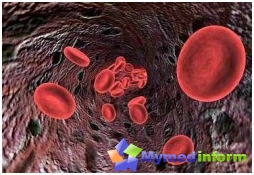
The most often affected by the iron deficiency anemia of a woman of childbearing age, since due to menstrual discharges, they are lost up to 3 milligms of iron per day, which is 0.5-1 mg exceeds the physiological possibility of receipt. For year, iron deficiency may be 180-200 mg.
During pregnancy and lactation, the need for hardware increases sharply. It is consumed on the growth of the fetus, the placenta is lost at blood loss in childbirth, it goes into milk. In general, it is about 800-900 mg.
If pregnancy proceeds against the background of a hidden or obvious iron deficit, then the child will also suffer anemia. It will be worse to develop and often root. Children are the second frequency and vulnerability of the risk category. According to statistics, the prevalence of anemia in children reaches 25%.
Causes of iron deficiency anemia
- Incorrect meals, especially vegetarianism in young, giving birth women, as well as in children.
- Menstruation duration more than 5 days.
- Repeated childbirth After a short period of time (less than 1.5 years), a large amount of birth, multiple pregnancy.
- Diseases of the gastrointestinal tract: Stomatitis, erosive gastritis, ulcerative disease, polyps, ulcerative colitis (inflammation of the colon with the formation of an ulcer). Erosion, polyps and especially ulcers can be a source of hidden, small, but constant bleeding and, therefore, losses of iron.
- Hemorrhoids (for the same reason).
- Tumors of the stomach and intestines.
- Operated stomach (for example, about the sickness of the disease) or intestines.
- Chronic Light Diseases: Bronchiectase, tuberculosis, Obstructive lung disease.
- Glice Invasii. Parasites are actively taken by iron from the intestinal contents and its admission to the human body decreases.
- Donors with perennial experience, especially women.
Usually, the deficiency of iron and the reduction of hemoglobin occurs gradually, for several months and years. The body adapts to live in conditions of lack of oxygen and reduce the activity of enzymes, so the bright manifestations of anemia arise with a significant decrease in hemoglobin levels.
Doctors allocate the following Severity of anemia:
- Easy degree: hemoglobin from 110 to 90 g / l.
- Average degree: hemoglobin from 90 to 70 g / l.
- Heavy degree: hemoglobin less than 70 g / l.
- Extremely severe degree: hemoglobin less than 50-40 g / l.
The rate of hemoglobin for men: 150-130 g / l, erythrocytes (5.1-4.0) x 10 ^ 12 / l; For women - hemoglobin 140-120 g / l, red blood cells - (4.7-3.7) x 10 ^ 12 / l.
What if your hemoglobin and / or erythrocytes are below the norm?
First of all, you need to go through the full diagnosis of a qualified physician. In addition to the level of red blood cells and hemoglobin, your doctor will appreciate more than a dozen indicators only in the general blood test, as many biochemical, taken from Vienna, and will also decide which additional surveys you need. Most often it will be a study of the stomach and intestines, an ultrasound, for women - consultation of the gynecologist. These and other diagnostic methods are necessary to determine the specific cause of anemia, without the elimination of which to restore your hemoglobin will be impossible. In an unclear situation, you will be consulted with a hematologist - this is a blood cell practitioner.
After identifying the full picture, you can proceed to treatment.
Principles of treatment of iron deficiency anemia
It will not be superfluous to repeat: anemia cannot be cured by folk remedies or reinforced nutrition!
Recall that there is a restriction of suction of iron from food, so it will not be possible to increase hemoglobin even feeding with one meat (which will be harmful).
Be sure to take iron preparations. There are quite a lot of drugs, they usually contain the so-called ionic, bivalent iron, the intensity of suction of which is many times higher than the arrival of iron from food. Preparations are selected by the doctor strictly individually.
Take patience: Take pills for long. How much exactly - the doctor will decide. Moreover, you should not throw iron intake, even if your hemoglobin has come to normal: after all, it is necessary to restore the fabric stock of iron. If this is not done, then hemoglobin after a while will decrease again and you have to start all over again.
Blood with anemia is rarely overflowing, only in severe cases.
Features of nutrition in the treatment of anemia
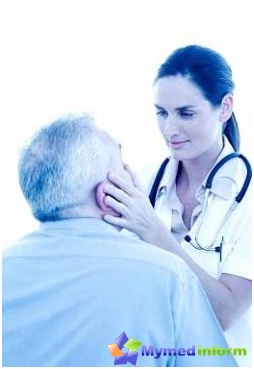
There are products that worsen the suction of iron, both from food and drugs. This is coffee, tea, milk, cottage cheese, chocolate, bran. Calcium preparations, Funds from heartburn and increased acidity, Antibiotics Also reduces the absorption of iron and, consequently, the effectiveness of treatment. Smoking negatively.
It is good to combine the reception of iron preparations with ascorbic acid, lemon, apples (acids contained in them contribute to the acceleration of suction), as well as with meat, fish.
By the way, from meat products the maximum absorption of iron comes from veal. From fish and liver - much less, so you do not need to eat raw liver!
These principles are valid for the treatment of precisely iron deficiency anemia. With other types of anemia (see. Above the classification) approaches to treatment and appointed drugs will differ significantly.
Please contact the doctor and do not self-medicate! The consequences may be unpredictable!
Prevention of iron deficiency anemia
First of all, it is a complete power with inclusion in the diet of a sufficient number of meat products. According to the rational food pyramid for adults on meat and fish products, 120-300 grams per day are given. Combine them better with vegetables and juices. Simultaneous use, say, coffee and kitlet, or extinguishing meat in sour cream, dramatically reduces the digestibility of iron.
Children and adolescents (especially girls, often passionately and unjust wishing to lose weight) also need to eat correctly. In the growing and ripening organism, the need for trace elements, vitamins and iron is much greater than in a mature. For newborn and breast kids, the main prevention of anemia is to normalize the metabolism of iron and the level of hemoglobin at mom.
In addition to food, prevention of anemia with the inclusion of medicines is necessary:
- All women who have menstruation last more than 5 days, as well as before pregnancy, childbirth and lactation.
- Teenage girls during puberty.
- Donors with perennial experience, regardless of gender.
In these cases, extended drugs are used, which can be taken 1-2 times a day for 5-7 days of each month.
Also prevention of anemia includes timely identification and treatment of diseases of the stomach, intestines, chronic infections and glides invasions. Patients with chronic diseases of the stomach, intestines, especially incentive operations, may also be required preventive appointments.
Be healthy, dear readers our site!



